Our insightful Gardening Expert and BBC Gardeners’ World presenter, Mark Lane, tends to his garden throughout the year – despite wintery weather. From creating your own ‘soil conditioner’ to the bulbs to sow now, Mark advises on preparing, planting in and protecting your green space through darker months.
Winter may not be everyone’s favourite season, especially when it’s raining or snowing outside, but gardens are not just for summer. You should enjoy your garden all year round; in winter, our outdoor spaces just need a little more TLC.
How to safely manoeuvre around your garden
With frost, ice and snow a garden path can easily turn into an ice rink, so ensure you have shoes that are warm and offer good grip. It’s a good time to purchase some grit to throw down onto the path for additional hold when the ground freezes over.
If, however, you feel like doing a spot of exercise to get your muscles working and your heart rate up then use a snow shovel to clear your path. Gardening can be a work-out with great physical and mental benefits; however, please remember to stretch and warm up inside before gardening at this time of year.
For many, the first frosts seem to prompt us into action. While our gardening friends further north of the country may already have experienced their first frosts, residents of the south might still have a few weeks to get things ready in the garden.
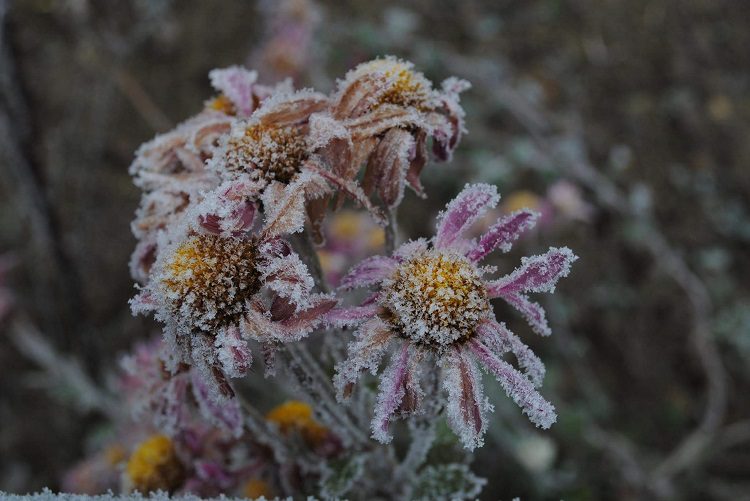
Make your own soil conditioner
At this time of year, it’s all about tidying your garden. Leaves will have been falling for a few weeks but rather than waste them, turn them into an excellent soil conditioner, which you can add to your plant beds the following year to improve its fertility. Create your own using these five simple steps:
- Collect the fallen deciduous leaves
- Place them into a black bin bag
- Add water from a watering can
- Tie up the bag and make holes in the bottom
- Place it somewhere in the garden where you can forget about it for 8-12 months
After this time, open the bag and you will have a crumbly, brown mix which has beneficial bacteria and pathogens that help new growth on plants; your garden will love you for it come next year. There is one exception, however. If your fallen leaves have signs of disease, mould or fungus then burn or dispose of them, as you will not want to transfer those pathogens back into your soil.
Helping your plants thrive through winter
If you love growing Pelargonium, Salvia, Canna lily, Begonia, Dahlia and some Fuchsia then you need to bring them into a cool greenhouse, porch, or a cool room of the house. Pelargonium can be used as houseplants over the winter months, but the others will need to be stored away. Dahlias need their foliage to be hit by frosts. The leaves will turn black, but that provides the perfect time to lift them, remove the dirt and dry them before placing them upside down on a shelf in the shed. This will allow any excess water in the tubers to come out. If you don’t have the space to store tubers then consider adding a thick mulch (a layer of organic matter up to 10cm thick) of homemade compost, shredded paper, straw, spent compost or bark chippings over the soil surface. This will act like a winter duvet and keep the Dahlia tubers warm and frost-free.
Plant for the season
You may think of winter gardens as being bland, boring and grey but with some key planting in early December (providing the ground is not frozen or waterlogged) or earlier in the autumn, you can have a colourful and scented winter wonderland.
When it comes to scented shrubs, you are spoilt for choice. The winter honeysuckle, Lonicera fragrantissima, will flower from December to March and produces fragrant, creamy-white flowers before the leaves appear. Plant it close to an entrance or pathway so that you can catch its lingering scent each time you pass. The sweet box, Sarcococca hookeriana var. digyna, produces clusters of small creamy-white flowers and dark green leaves. The strong scent is vanilla-like and is one of the headiest winter fragrances. This too will flower from December to March.
For something a little different, why not try wintersweet, Chimonanthus praecox, which has sulphur-yellow flowers flashed with purple inside from December to February. The sweetly scented flowers make this a great shrub to take cuttings from for an indoor bouquet. Daphne odora is a small, scented pale pink bloom, flowering from January to March, and is evergreen. For a burst of colour, grow Cornus sanguinea ‘Midwinter Fire’ with fiery orange, red and yellow stems next to Cornus sericea ‘Flaviramea’ with its bright green stems – two shrubs to bring colourful impact to your winter outdoor space. For great form, colour and scent, now is a great time to plant witch-hazels and mahonias which provide early nectar for pollinators in deep winter.
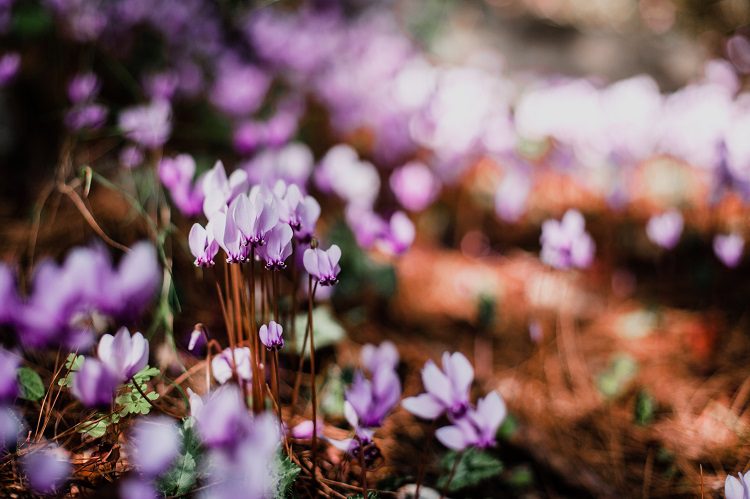
For carpets of scented, colourful flowers in your garden, you cannot beat Cyclamen coum, providing delicate pink flowers from December to April. I love getting my nose down low just to sniff their slight fragrance. These are perfect for a woodland setting around the bases of trees and in open lawns.
Bringing bulbs indoors
If you want to try your hand at forcing bulbs indoors (tricking bulbs to bloom out of season indoors) then one of the easiest is paperwhite daffodils, such as Narcissus papyraceus ‘Ziva’, with highly fragrant white flowers. Plant them close together in shallow pots or bowls filled with bulb fibre or compost, ensuring the growing tips stick out just above the top of the compost. Put them in a cold, dark place for eight weeks to encourage the flowering stems and roots to develop. Keep the bulb fibre or compost just moist. When you see that new shoots are about 4-5cm tall, bring them into a dark room away from bright sunlight. The leaves will gradually turn green, and you can slowly increase the light levels as they do. The flowers will soon follow. With practice you can have daffodils in flower in your Christmas Day tablescape.
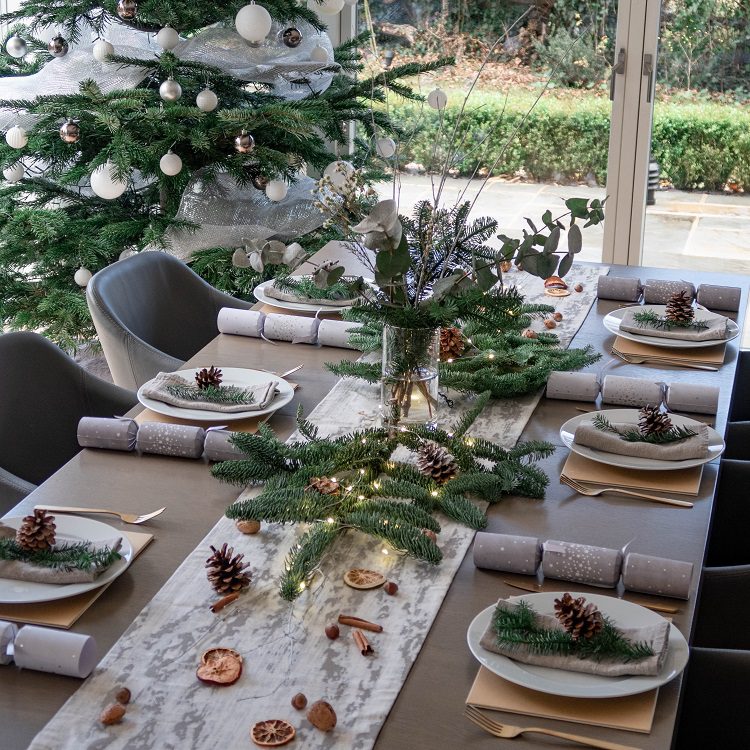
For clematis lovers, there are a few that flower from December to February and are fragrant. The fern-leaved clematis, Clematis cirrhosa var. balearica, has scented creamy-white flowers speckled inside with maroon ‘freckles’ and bronze-tinted evergreen leaves. It is borderline hardy, so grow it in a warm spot in the garden, in full sun or partial shade. Clematis cirrhosa var. purpurascens ‘Freckles’ has creamy pink scented flowers speckled inside with red-brown freckles. For a rare and unusual form of Clematis try growing Clematis napaulensis, which is dormant throughout the warmer months and then from November to March has pendulous, scented, green-yellow bells stuffed with attractive red-purple stamens.
Protecting pots and plants
If you love growing plants in containers, then now is the perfect time to protect both your pots and plants. Clay pots can be very expensive and not all of them are frost-proof. Recycle bubble wrap and wrap it around the pots, then secure it in place with string or bulldog clips. Never wrap a plant in bubble wrap as moisture will form inside it, leading to harmful pathogens and diseases. For plants, use horticultural fleece. It looks like the cobwebbing material you get at Halloween but is more like a fabric. Wrap this around your plants and again secure in place with string. For tender plants that cannot be moved indoors, such as tree ferns, pack the crown of the plant with straw and the old remaining fronds, then wrap in fleece. Lift pots off the ground using pot feet, bricks, stones or pieces of wood. This prevents water collecting underneath the pots, which can freeze and have a detrimental effect on roots.
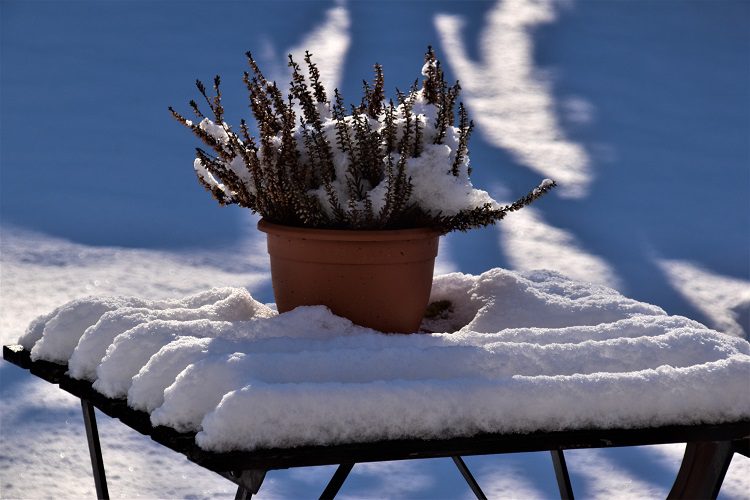
Winter-proofing furniture and tools
It's important not to forget about furniture. A lot of tables and chairs are designed to stay out all winter, but it’s essential to wipe everything down and apply protective oils to wooden furniture. Oil needs time to soak in, so don’t leave it until the spring. If possible, store your furniture in a shed, garage or loft and wash the cushion covers.
Garden tools can be cleaned and hung up. To prevent rust, clean and oil metal blades before putting your tools away for winter. Secateurs should be taken apart and cleaned properly to remove soil, debris, rust and pathogens. Gardening gloves should be stored away along with other gardening equipment.
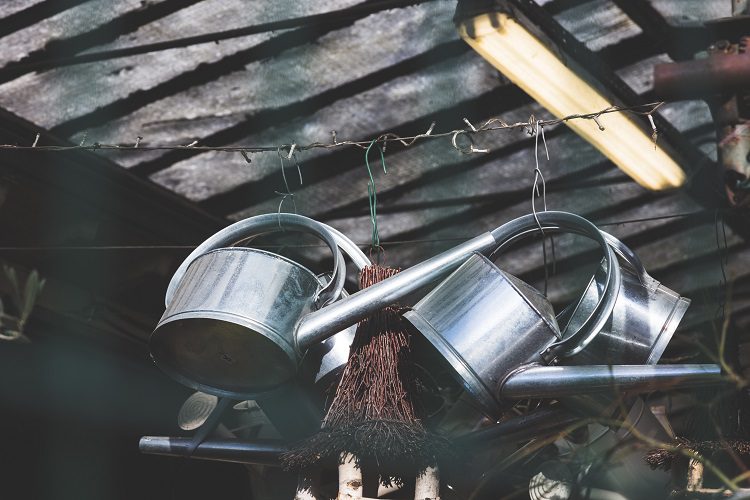
Storing and pruning
If you enjoy growing vegetables and fruit, then it’s important to store your crops properly over winter. Only store perfect, unblemished crops. Anything damaged should either be used immediately or better still added to the compost heap. Apples, pears, root vegetables and potatoes are best stored on slatted stacking trays or crates in a cool and airy outbuilding that keeps them frost-free and ready for use in hearty winter bakes. Ventilate the shed or outbuilding regularly to keep humidity levels low and continually check your stores. Remove blemished or rotten crops as soon as possible.
While it’s tempting to reach for the pruning saw and loppers after the leaves have fallen, it’s better to wait to prune trees and shrubs during their late dormant season between February and early April. Pruning now can cause dieback as wounds are more susceptible to damage from severe winter temperatures.
Finally, make yourself a cuppa, sit back, look through all the plant and seed catalogues and start planning for the year ahead. Keep on loving and looking after your garden. Keep on being you.
Stay up to date
Latest Blogs

Whole Home Comfort with Stannah and HSL

Dame Zandra Rhodes x Stannah: When accessibility meets style
Could more people benefit from home adaptation support for hidden disabilities?
50 years of Stannah Stairlifts – A milestone grounded in purpose

BBC’s Dr Punam Krishan reveals a little-known Parkinson’s symptom to watch for...

Are you at risk of falling? Dr. Punam Krishan’s simple 12-second test could tell you...

Snore Wars: Could sleeping separately be the secret to a better night’s rest?

Proud to carry the Made in Britain mark!
Stairlifts made for you
All our stairlifts whether straight or curved are customised to suit you and your home so call now to arrange a visit to get your FREE personalised quote!
